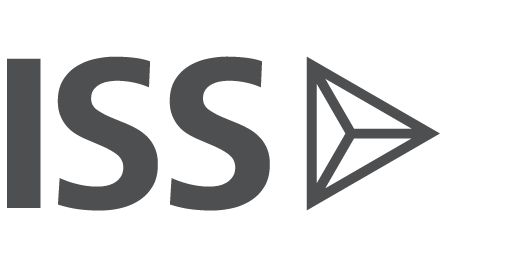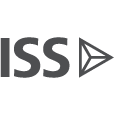The Proxy Access Era kicked off in a big way in 2015. From a near-standing start this season, proxy access has bolted to the lead of the 2015 shareholder proposal race. Commanding considerable horsepower, average support for proposals based upon the 3 percent-for-three-years access threshold formulated by the SEC has crossed over into majority vote territory. More than 100 proposals have been submitted. Nearly 40 majority votes have been recorded to date this season, which is at par with the majority votes for all other shareholder resolution topics combined.
Simply put, the momentum for proxy access appears to be unprecedented and its potential unlimited. By next season, based on existing access provisions or standing proxy access commitments made to date, around 6 percent of S&P 500 firms will have proxy access rules in place. This is comparable to the prevalence of independent board chairs at S&P 500 firms 12 years ago. Given the possible escalation against directors who fail to respond to shareholder proposal mandates, the proportion of proxy access adopters could easily double. At the outset of 2015, the access line was only 15 issuers long, but has grown more than three-fold to 50 in just six months.
Governance Trends Before Proxy Access
“Scenic Route” for Annually Elected Boards
Like the proverbial tortoise, the move away from staggered boards has been slow and steady. Decades in the making, the campaign’s early years (in the late-1980s and 1990s) moved in slow motion as staggered board repeals – largely prodded by gadflies’ shareholder proposals during this period – merely offset adoptions by emerging companies. Onerous lock-in supermajority vote requirements to repeal staggered board-related charter provisions often applied the brakes to the reform effort even after directors had agreed to make the switch. Some boards needed to make multiple attempts to clear vote requirements set as high as 80 percent of the outstanding voting power.
The long, arduous training period paid off for the tortoise in the early ’00s, however, when proposal submission totals and voting support rose amidst publication of a series of academic studies that tied staggered terms to lower stock valuations. Average support for board declassification shareholder proposals crossed the 50 percent barrier for the first time in the year 2000.
ISS’ Voting Analytics data show that investors have cast their votes on 811 repeal classified board shareholder proposals at 511 unique firms since the year 2000. Average support over this period is 66.7 percent of the votes cast. Nearly 70 percent of these proposals received majority votes; 62 percent are considered to have passed. Forty seven percent of the 800-plus shareholder proposals appeared on the ballots of S&P 500 firms where they received 68.9 percent average support of the votes cast, and 39 percent of the proposals received majority support with 36 percent passing.
The Gallop for Majority Vote Standards
In contrast to the classified board marathon, the sprint to put majority voting rules in place for uncontested director elections at S&P 500 firms brings to mind the proverbial hare. The quick spread of majority voting rules was primed by a massive shareholder proposal campaign led by the Carpenters’ union funds, which began in earnest in 2005 with 60 proposals on ballots.
Within a few years of its kickoff, the campaign began to score majority votes with ease at many companies. The race had already kicked into high gear by 2006 when investors voted on almost 100 shareholder proposals that received 48.8 percent support on average and with over 40 percent of the proposals receiving majority votes. The effort broke the 50 percent average support barrier just 3 years after the starter’s pistol fired off. Since 2004, when the sprint for majority voting began with just 4 proposals, shareholders have seen about 480 majority voting proposals on ballot, which have received 53.9 percent average support. Nearly one-half (46 percent) of the proposals have received majority support; 26 percent drew support in the 40 to 49 percent range.
With the prevalence of majority voting approaching 90 percent of the S&P index, the campaign is downshifting. ISS’ Voting Analytics data show just 12 majority vote shareholder proposals in 2015, the lowest number of proposals since 2004. 2015 also boasts the highest average support for majority voting proposals – 69.9 percent support for the nine vote results available.
Lack of Traction for Independent Chairs Keeps Wheels Spinning
The mythical unicorn might be a fitting mascot for shareholder proponents’ efforts to convince boards to name independent directors as board chairs. Despite a decade-long shareholder proposal campaign, the finish line for the reform is not in sight. Despite leading the shareholder proposal tally for the past several years, large proposal volumes have not translated into higher voting support. Tepid or lower support for independent chair proposals, particularly by large mutual funds, has chicaned the race track and effectively speed-bumped uptake for independent board leadership. Without a track record of strong support, a stockpile of majority votes to cite, and a general lack of appetite to appointindependent chairs, proponents rarely find boards open to negotiating over making the switch to independent leadership at the helm. While a preponderance of the resolutions that investors vote on do not get majority support, they do obtain sufficient shareholder support for resubmission year over year.
Since the year 2000, investors have cast their votes on approximately 600 shareholder proposals at roughly 270 companies calling for independent board chairs, which have received average support of just 30.7 percent. Only 6 percent of the proposals have attracted majority votes. A look at the “lap times” the proposals scored shows that 15 percent of the resolutions received support in the 40 – 49 percent range (40s), 46 percent drew support in the 30s and 20s and the remainder garnered less than 20 percent support.
Proxy Access – Fast Out of the Gates
Given its fast break from the starting gate, the proxy access campaign appears to have the long ears, bushy tail, and speedy gait of its majority voting predecessor.
Over 140 proxy access shareholder proposals have appeared on ballots at about 120 firms since the year 2000, but nearly 60 percent of these resolutions will be on 2015 meeting agendas. While average support over this entire time period is currently 45 percent of the votes cast, the pre-2015 season proposals were evenly split between SEC clones and proposals (largely hailing from retail holder proponents) peddling more permissive (less than 1 percent ownership) access formulas. In contrast, all of the 2015 proposals promote the 3 percent-for-three-years formula and average support stands at 55.8 percent. Seventy eight percent of the almost 50 proxy access proposals that have passed since 2007 have passed in 2015, and likewise 2015 currently boasts 73 percent of all majority votes.
S&P 500 firms have attracted 72 percent of all the proxy access proposals since the 2000 season and 75 percent of 2015’s resolutions. These large-cap firms have drawn 85 percent of the majority votes since the dawn of the new millennium and almost 90 percent of 2015’s proxy access majority votes. Average shareholder support for the proposals at large cap firms in 2015 is currently 57.8 percent.
What Does the Future Hold?
Given the early and impressive success of the proxy access campaign in 2015, it seems unlikely that the initiative’s momentum will fizzle out or that investors will lose interest in the topic any time soon. Rather, the campaign’s initial sprint appears to have significant endurance potential for the foreseeable future and it is likely that investors will continue voting on proxy access proposals in numbers similar to or greater than those witnessed in 2015 until access becomes the norm rather than the exception. -Patrick McGurn,ISS Special Counsel and Head of Strategic Research Analysis and Studies, and Edward Kamonjoh,ISS’ Head of U.S. Strategic Research Analysis and Studies



